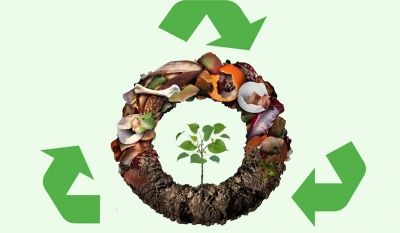
The word biodegradable, used in conjunction with a substance or object, denotes the capability of being decomposed by bacteria or other living organisms and thereby avoiding pollution. While this adjective describes things that can be broken down into basic substances through natural environmental techniques, the products it is used along with can vary greatly in the time they take to break down. For instance, while a loaf of bread requires only a couple of weeks. a piece of paper might need months and a biodegradable plastic carton could take even years to break down.
Some items are obviously biodegradable. Examples include food scraps and wood that hasn’t been treated with chemicals to resist bugs and rot. Many other items, such as paper, also biodegrade relatively easily. Some products will biodegrade eventually, but it may take years. This includes steel products, which eventually will rust through and disintegrate, and some plastics.
However, conditions are important to encourage biodegradability. Products that will biodegrade in nature or in home compost heaps may not biodegrade in landfills, where there’s not enough bacteria, light, and water to move the process along.
Many organic companies use biodegradable packaging for products or produce organic biodegradable products, but the items may not be as biodegradable as customers think. To make matters more confusing, many items are labeled as “compostable.”
Compostable products are all biodegradable, but they are specifically intended for a composting environment. In the right setting, these products break down even more quickly, usually within 90 days, and they leave behind a nutrient-rich organic material called humus, which creates a healthy soil environment for new plant growth.1
Whether an item is compostable or simply biodegradable, it needs to be placed in an environment that facilitates its breakdown. Compostable products require composting environments. But, even some biodegradable items need to be degraded in a controlled composting environment or facility—and very few of these facilities exist in the United States. These large facilities are designed to keep materials at 140 degrees Fahrenheit for 10 consecutive days.
For example, PLA, a popular biodegradable material for green companies, will only decompose into carbon dioxide and water in a controlled composting environment, not in a backyard composting arrangement, according to standards developed by the Biodegradable Products Institute.
With all of these variables, business owners need to communicate clearly with their customers about what they mean when they say “biodegradable.” Even better are those businesses that take it a step further and educate their customers about how to properly dispose of their products.
Credit : The balance small business
Picture Credit : Google

